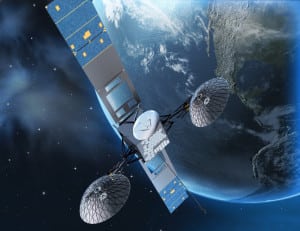Latest News

An artist’s rendering depicting a third generation Tracking and Data Relay Satellite (TDRS). Photo: NASA
[Via Satellite 04-13-2016] Boeing has completed, and delivered to storage, the last in a series of communications satellites for NASA’s Tracking and Data Relay Satellite (TDRS) constellation. TDRS M is the sixth Boeing-built satellite for the NASA network providing high-bandwidth communications to spacecraft in Low Earth Orbit (LEO). Programs using the system include those supporting human space flight, the International Space Station (ISS), the Hubble Space Telescope, the Earth Observing System and several launch vehicles.
TDRS M is part of the second block of Boeing-built TDRS spacecraft. The company delivered the first three (TDRS H, I and J) from 2000 to 2002. The first two satellites of the second block (TDRS K and L) launched in 2013 and 2014. Boeing completed this last satellite, TDRS M, ahead of the contract schedule and within budget at the end of 2015.
NASA has given Boeing its formal consent to store the satellite at the company’s satellite development center in El Segundo, Calif., until it is ready for deployment. TDRS M is expected to launch on a United Launch Alliance (ULA) Atlas 5 rocket in 2017.
“Boeing’s advanced TDRS satellites provide NASA with greater bandwidth at an affordable cost, helping them provide additional capacity for this critical communications relay network,” said Dan Hart, vice president at Boeing Government Satellite Systems. “We are continuing to invest in technologies that could enable communications for future NASA near-Earth, Moon, Mars and deep space missions.”
Get the latest Via Satellite news!
Subscribe Now